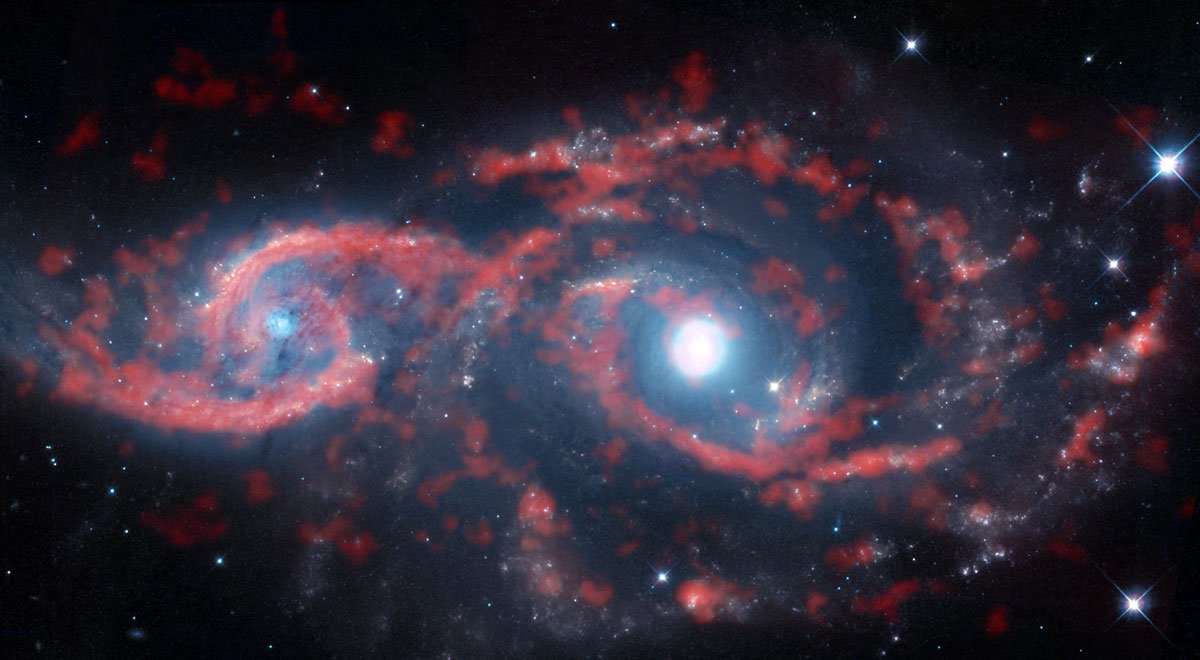Using the ALMA telescope in the Atacama Desert in Chile, astronomers have captured the amazing photo below, of two spiral galaxies almost colliding.

The location of this dramatic spectacle is found 114 million light years from Earth in the direction of the constellation Canis Major. Only visible in the Southern Hemisphere, where the two colliding galaxies, IC 2163 and NGC 2207 resides.
According to the researchers who published a paper documenting the findings in the Astrophysical Journal, the near collision results in stars and gas moving like tsunamis when the galaxies touch the other.
“What we observe in this galaxy is very much like a massive ocean wave barreling toward shore until it interacts with the shallows, causing it to lose momentum and dump all of its water and sand on the beach,” said Bruce Elmegreen, a scientist with IBM’s T.J. Watson Research Center in Yorktown Heights, New York, and co-author on the paper.
That galaxies collide with each other is not unusual, according to the researchers. But that the pattern remains so clear after the blast is, however, much rarer, a pattern that “only” last a few tens of millions of years.
A spiral galaxy consists of tens of billions of stars, and often look like a flat, discus-like disc with long arms. The colliding galaxies hook into each other as they pass by and forms a structure that resembles a colossal eye with a pupil and surrounding eyelids.
“Not only do we find a rapid deceleration of the gas as it moves from the outer to the inner edge of the eyelids, but we also measure that the more rapidly it decelerates, the denser the molecular gas becomes,” said Kaufman. “This direct measurement of compression shows how the encounter between the two galaxies drives gas to pile up, spawn new star clusters and form these dazzling eyelid features.”
Computer models predict that such eyelid-like features could evolve if galaxies interacted in a very specific manner. “This evidence for a strong shock in the eyelids is terrific. It’s all very well to have a theory and simulations suggesting it should be true, but the real observational evidence is great,” said Curtis Struck, a professor of astrophysics at Iowa State University in Ames and co-author on the paper.
Reference:
Tsunami of Stars and Gas Produces Dazzling Eye-shaped Feature in Galaxy






















